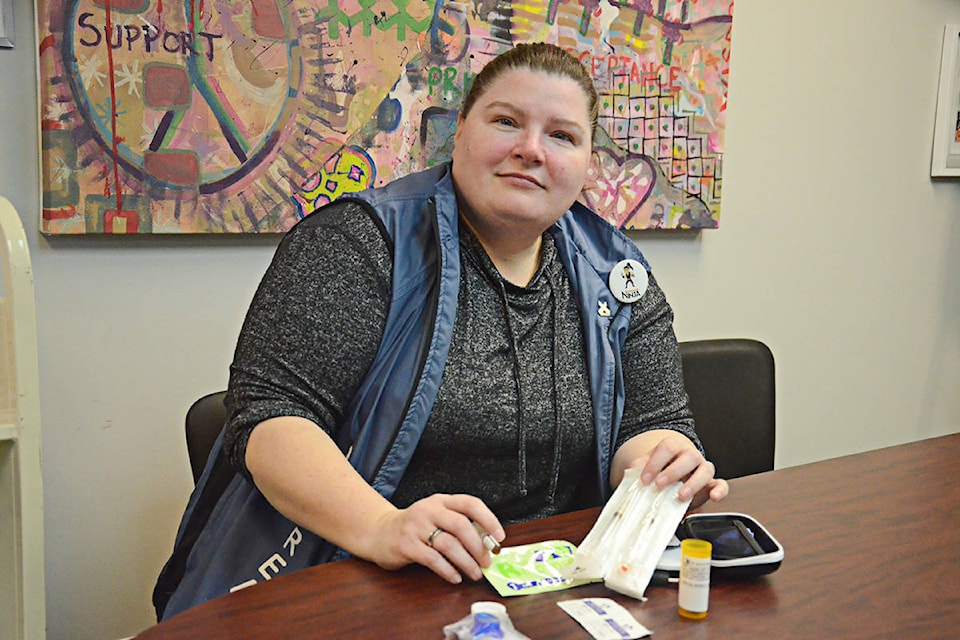Harm reduction is driving the number of overdose and drug toxicity deaths down in Langley, according to the front line social workers who are trying to keep users alive.
The Lookout Society runs a mobile outreach team in Langley, as well as the Rig Riders, a team that safely collects discarded needles.
Like other local social service agencies and non-profits, they give training on how to administer Naloxone, the drug that can stop an otherwise lethal opioid overdose, if caught in time.
“Our response to overdose has gotten better,” said Lookout’s Susan Keeping, explaining why she believes the numbers have gone down.
The number of drug deaths in Langley fell by more than half last year, but numbers were still higher than they were in the years before a provincial health emergency was declared in 2016.
In 2019, 16 people died of illicit drug toxicity deaths in Langley, according to numbers released late last week by the BC Coroner’s Service.
That’s a sharp decline from the 33 who died in 2018, and the peak of 36 deaths in 2017.
But in 2013 to 2015, deaths were never higher than 10 per year. As recently as 2009 and 2010, there were only two to three overdose or drug toxicity deaths per year in Langley.
Langley remains among the communities with the highest number of drug deaths in B.C., at 13th spot. Vancouver had the most deaths in 2019, at 210, followed by Surrey at 105.
Many overdoses in Langley are of employed young men, often working in the trades, who have housing. Many die because they overdose in their own homes, alone and with no one to help them, noted Keeping.
A poster campaign and other outreach efforts are trying to inform those users, Keeping said.
Among the harm reduction projects Lookout Society has undertaken, they offer drug testing kits that can check if drugs contain fentanyl, the extremely potent opioid behind many of the deaths in the last few years.
Kathie V., one of the harm reduction and outreach workers, said Lookout won’t run the test, but will provide them to users.
Sometimes users dispose of the drugs if they contain fentanyl, or use less of it, Kathie said.
After the stats were released, B.C.’s chief coroner Lisa Lapointe noted that the 981 deaths province-wide last year represents a 36 per cent decrease from 2018, but the number is still almost identical to the number of those who died in 2016, the year the health emergency was declared.
Lapointe called for improved access to a regulated, safer drug supply in the province to end the high number of deaths.
“More than 5,000 lives have been lost in B.C. since 2016 as a result of illicit drug toxicity. These deaths have deeply hurt families and communities across our province and represent an immense loss of potential in all walks of life,” said Lapointe. “The number of illicit drug toxicity deaths in 2019 remains higher than motor vehicle incidents, suicides and homicides combined, and B.C. continues to bear the heaviest toll of the impacts of the unpredictable, profit-driven, illicit drug market.”
